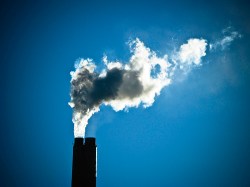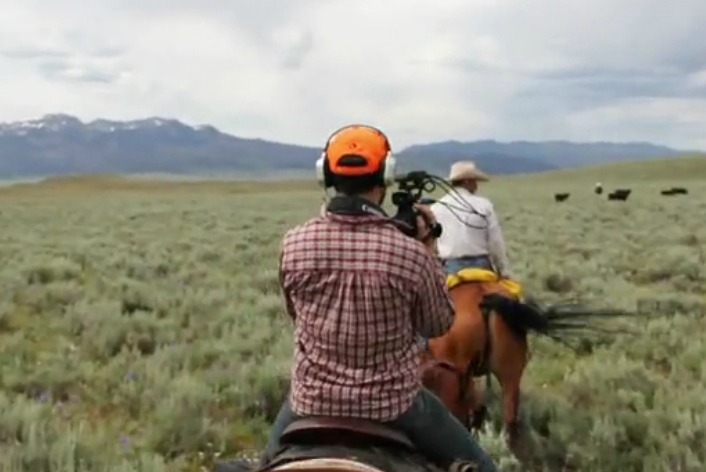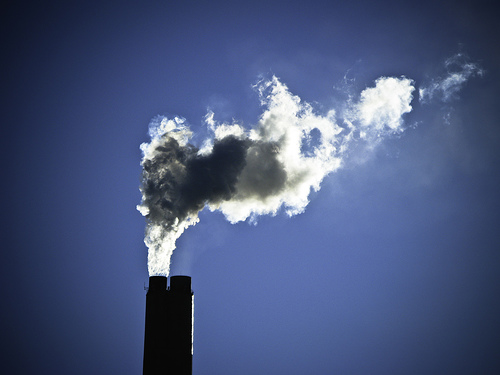
Photo by Nick Humphries.
A version of this post originally appeared on Climate Progress.
Big polluters and their congressional allies have created a new straw man to knock down with the invention of the so-called “war on coal.” It is a multimillion-dollar disinformation campaign funded by Big Coal polluters to protect their profits and distract Americans from the deadly effects of air pollution on public health.
However, with the number of coal jobs in key coal states actually on the rise since 2009, it’s more like peacetime prosperity than war in coal country. The War on Coal is nothing more than a new shiny object, designed by big polluters to distract Americans from the real war — the polluters’ attacks on their health — and the truth.
Coal companies and dirty utilities claim that long-overdue requirements to reduce mercury, arsenic, smog, acid rain, and carbon pollution from power plants will kill jobs. In West Virginia, however, coal mining employment was higher in 2011 than at any time over the last 17 years. Federal jobs statistics also show modest coal mining job growth in coal states like Virginia and Pennsylvania.
In West Virginia, a recent report from the nonpartisan West Virginia Center for Budget and Policy showed coal mining jobs are actually rising, with 1,500 new coal jobs added since 2009. In Pennsylvania, Energy Information Administration (EIA) data shows a 2.3 percent increase in coal-related jobs. And in Virginia, EIA data shows a 6.7 percent increase in coal mining employment from 2009 to 2010.

The Environmental Protection Agency (EPA) has promulgated or proposed new clean air standards for smog, acid rain, mercury, air toxics, and carbon pollution that will save lives, create jobs, and protect public health. For example, the Mercury and Air Toxics Standard [PDF] alone could prevent up to 11,000 premature deaths, 130,000 asthma incidents, and 540,000 lost work days every year. This would provide at least $59 billion in economic benefits.
The Economic Policy Institute (EPI) projects that the mercury standard will actually have a “positive net impact on overall employment — likely leading to the net creation of 84,500 jobs between now and 2015.” The jobs created by the standard, however, would not just be limited to certain industrial sectors. EPI’s study projects that “8,000 jobs would be gained in the utility industry itself,” along with the over 80,500 jobs that would be created to build pollution control equipment. While dirty coal companies claim that the mercury standard will cause massive unemployment, EPI notes that “only 10,600 jobs would be displaced due to higher energy costs.” Richard Morgenstern, a former Reagan and Clinton EPA official, predicts that the new standard will have “no net impact” on employment.
EPA predicts that its proposed carbon pollution standard [PDF] for new power plants will have no impact on employment or existing coal plants. In fact, the standard simply complements existing market factors, as the EPA points out:
Because this standard is in line with current industry investment patterns, this proposed standard is not expected to have notable costs and is not projected to impact electricity prices or reliability.
So what is happening to King Coal? The real culprit is the low price for natural gas. A February 2012 analysis of coal plant retirements by the Analysis Group [PDF] found that coal plant declines resulted from basic changes in market forces:
The sharp decline in natural gas prices, the rising cost of coal, and reduced demand for electricity are all contributing factors in the decisions to retire some … coal-fired generating units. These trends started well before EPA issued its new air pollution standards.
Coal industry executives themselves say that low natural gas prices, a warm winter, and a sluggish economy are the primary reasons for coal mining worker layoffs. The Bipartisan Policy Center (BPC) noted [PDF] that industry-commissioned doomsday projections of economic losses from EPA standards are vastly exaggerated by including unrelated regulations and worst-case scenarios. BPC found that “several investment analysts were conducted prior to EPA’s [rule] proposal and made worst case estimates about what EPA was likely to require.”
Coal-generated electricity is relatively inexpensive because the public pays for the external costs from burning coal. These expensive harms include premature deaths, asthma attacks, respiratory ailments, lost productivity, and the impacts of climate change. The National Academy of Sciences estimates that burning coal costs $62 billion annually due to premature deaths, more respiratory ailments, and lost work days.
The American Coalition for Clean Coal Electricity — a front group for coal companies and dirty utilities — plans to spend at least $40 million in ads and lobbying to convince Congress to block these vital public health standards. Fortunately, voters won’t be fooled by this attempt to distract them from the real public health impacts of dangerous air pollution. We understand that this isn’t a war on coal. It’s a war on us.




